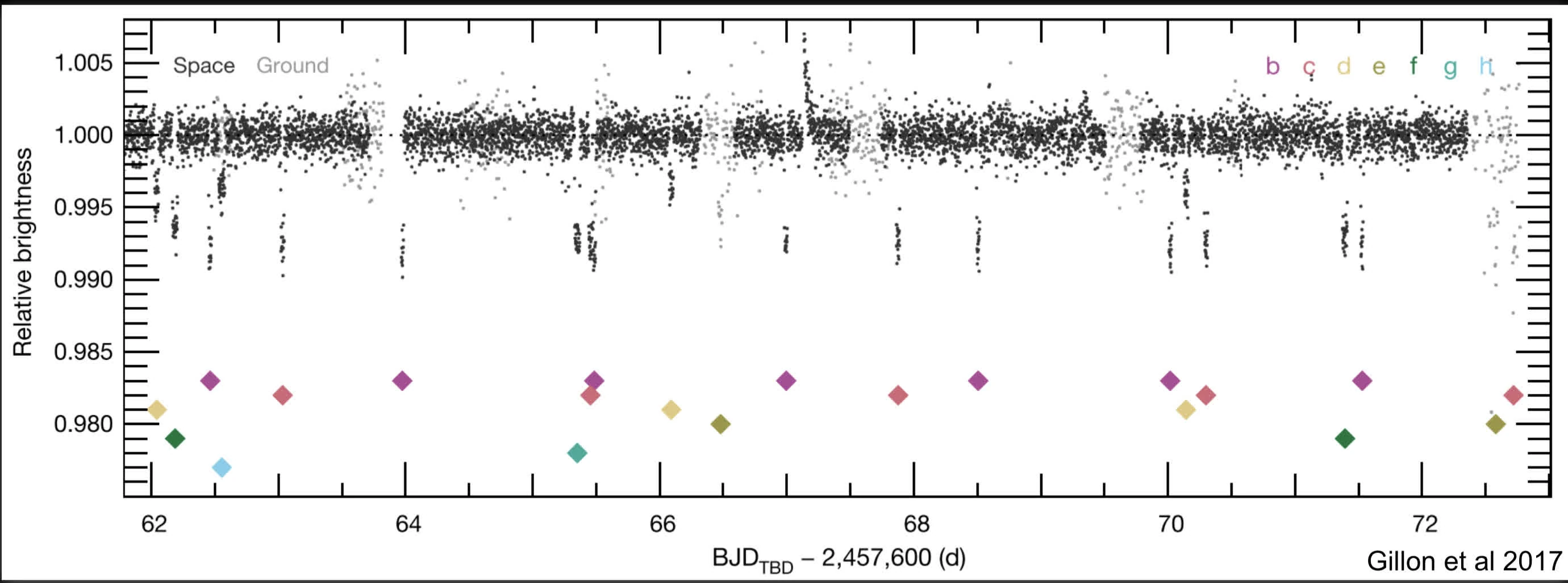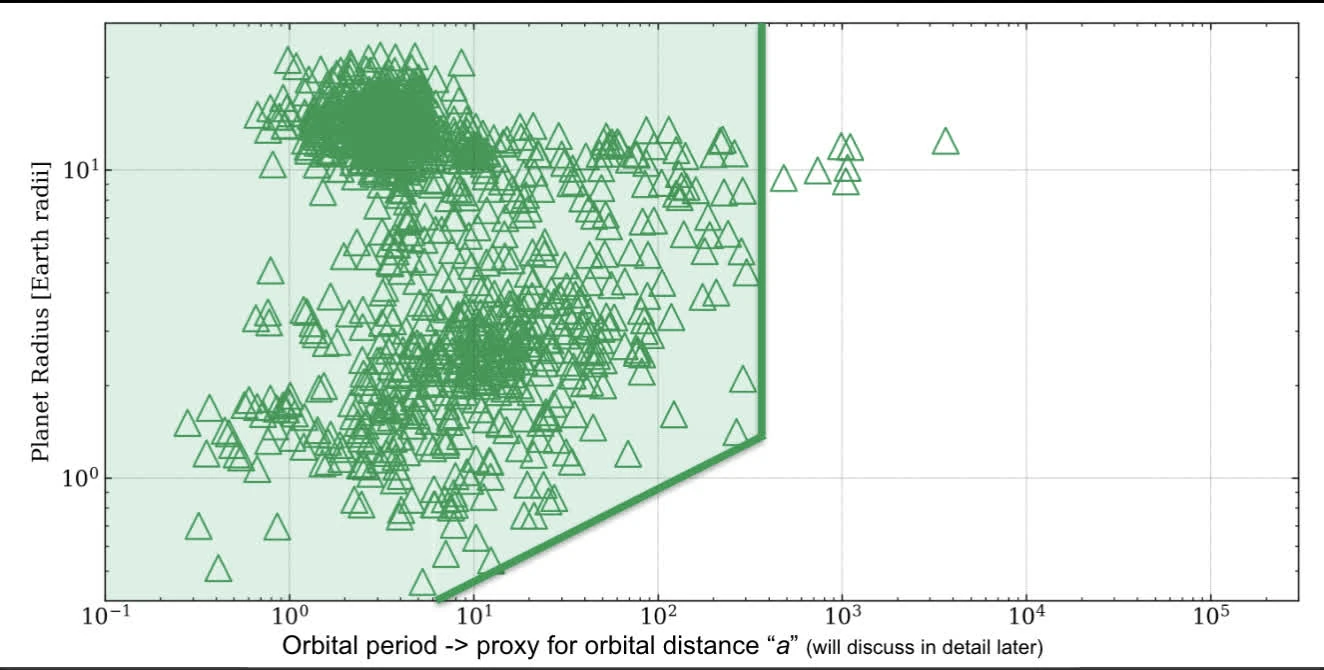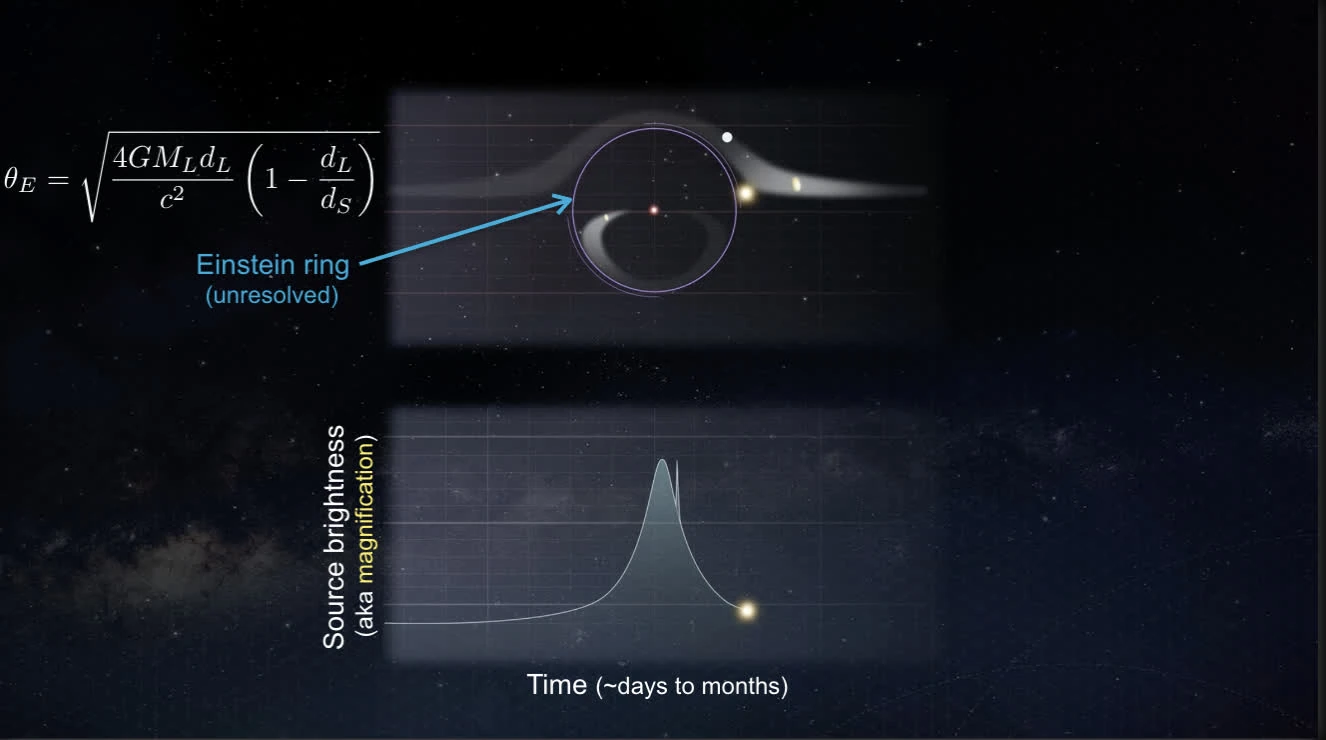Ref: Solar System Exoplanets 2024
Obj.
- content of solar system and orbital properties
- Compare properties of Solar System to known exoplanetary
- six techniques for exoplanet detection & limitation.
How people learn?
Student enter the classroom with preconceptions about how the world works. If their initial understanding is not fully engaged, they may fail to grasp new concepts
develop competence
- foundation knowledge
- interrelationships among facts and concepts
- retrieval and application.
Solar system
Sun → terrestrial planets → asteroid belt → Jovian (gas giants) ~ Ice giant planets → Trans-Neptunian objects (TNOs) (Dwarf planets → Kuiper belt → Oort cloud)
1 au(astronomical unit): average distance between Earth and Sun
Planetary orbits are (nearly) co-planar
- Dispersion in mutual inclinations:
- Pluto and many other TNOs are _more highly inclined
Consequence of Protoplanetary disks
from Alma telescope
- radio images of warm dust continuum ()
- Disk sizes
- Variety of morphologies
Question
Concentric gaps opened by protoplanets?
- Due to active construction of two protoplanets?
Question
What other dynamical properties do you expect for planets formed from a disk?
- Keplerian Motion: Planets formed from a disk are expected to exhibit Keplerian motion → direct consequence rather than properties
Regular vs. Irregular Satellites (aka, moons)
| Regular Satellites | Irregular |
|---|---|
| Resemble mini planetary systems | Irregular orbits |
| prograde | prograde or retrograde orbits |
| low mutual inclinations, e.g: 4 Galilean moons of Jupyter | highly elliptical |
| nearly circular orbits | highly inclined |

Most exoplanetary systems are compact
Kepler-11 System
Transit

- Time-resolved photometry (i.e. stellar brightness) = “light curve” Can measure:
- Orbital period
- Orbital inclination
- Has to be edged-on
- relative to telescope, not to the star
- Reference is line-of-sight to exoplanetary system.
- Planet radius
transit depth.
limb-darkening
- appears fainter at their edges compared to centres
- depends on the star’s temperature structure and the wavelength of the observations

The higher the depth, the larger the planet
Limb-darkening only depends on the stars, and wavelength observing at
Depth doesn’t depends on how far away the planets is away from the star (depends on the durations, orbiting more slowly)
Duration is impacted by period and inclination
known transiting expolanets

Geometric transit probability:
where and is the sun and earth respectively
Transit Timing Variations
oscillating orbits

B exhibits larger TTV
A is more massive, since B is influenced by A (pulled by gravitational effect)
Radial velocity
Only sees the bigger stars chemical abundances in star atmosphere → graphs (dotted vertical lines)
Time-resolved spectroscopy to measure Doppler-shifted spectral features
Radial velocity shift translates into wavelength shift
Can measure
- Orbital period
- Orbital eccentricity
- Planet’s minimum mass
semi-amplitude of RV signal K
K depends on the orbital inclination i such that RV method is sensitive an upper limit on planetary mass
Derivation
: planet mass, : orbital inclination, : orbital period, : stellar mass
- Insensitive to face-on, maximally sensitive to edge-on
- Easier to detect big planets
Transits + Radial Velocity (Radius + mass) → planet bulk density
Astrometry
proper motions

Aside - Parallax
1 pc = 1 AU / 1"
1” arcsec = 1/60 arcminutes = (1/60)/60 degrees
parsec is the distance from two planets
Consider a star-planet system located at d from us
biased on long period
Gravitational Microlensing
Mass bends spacetime → light ray are bent by a curved spacetime → massive object act as gravitational lens
